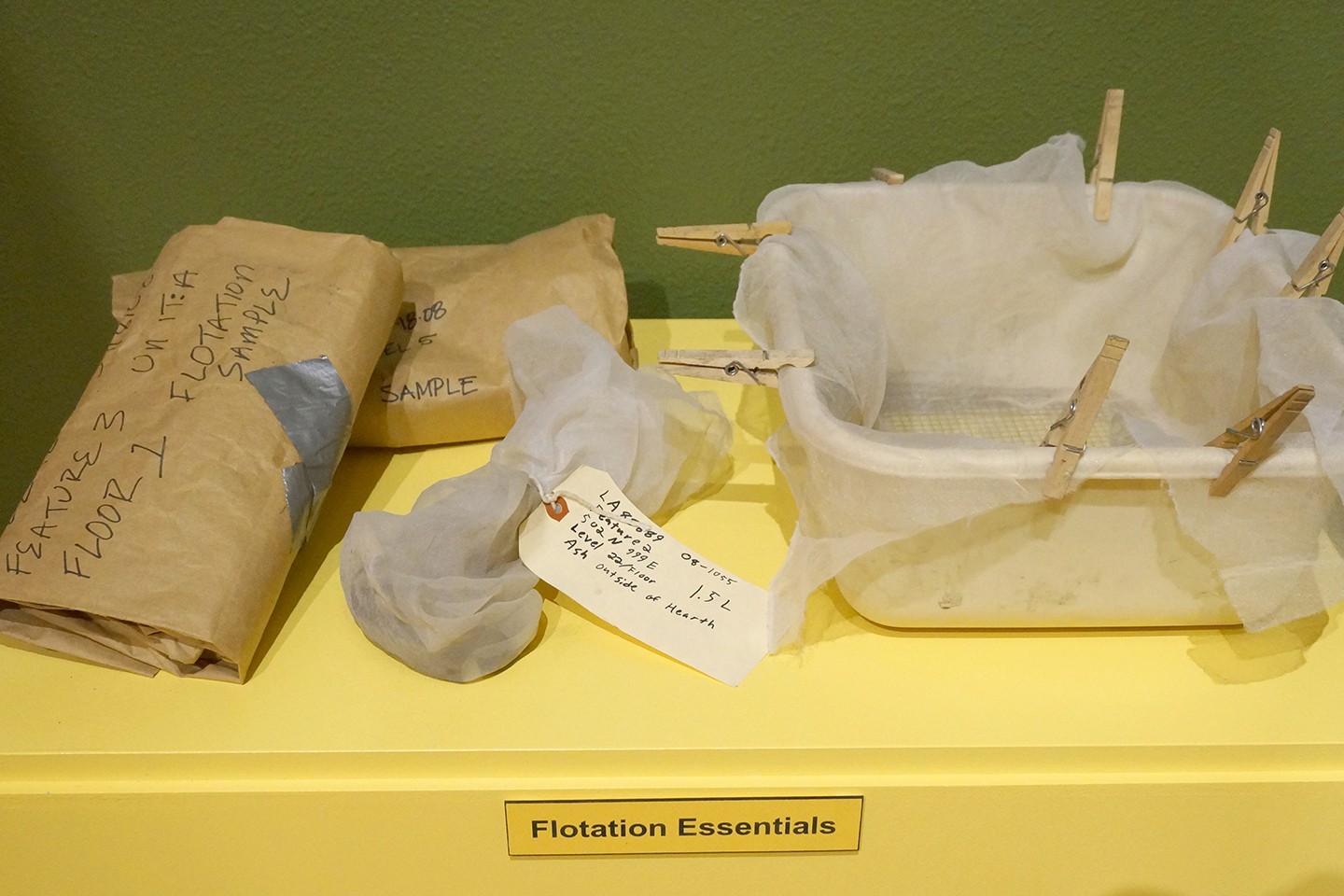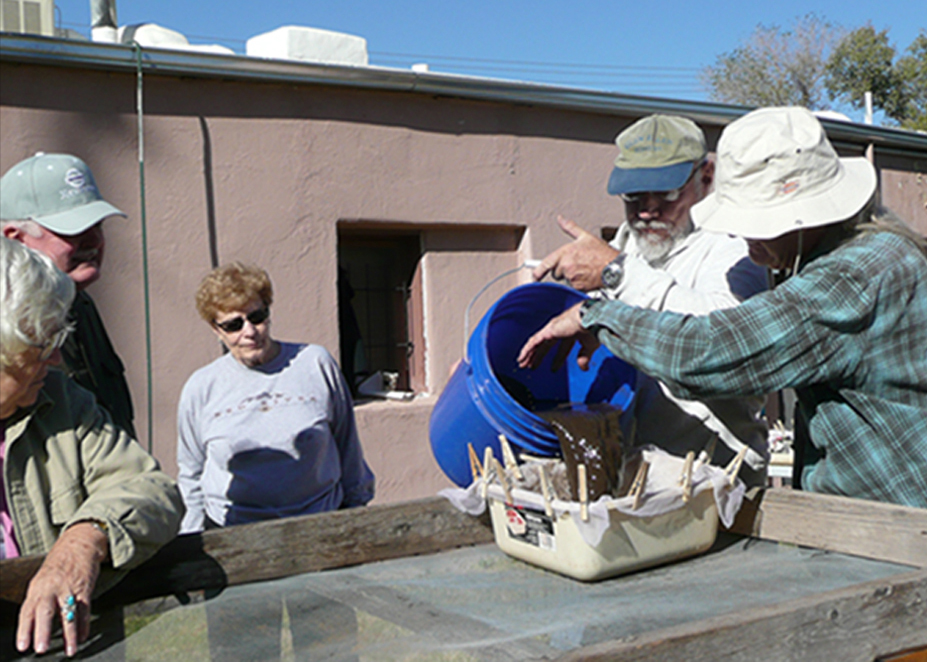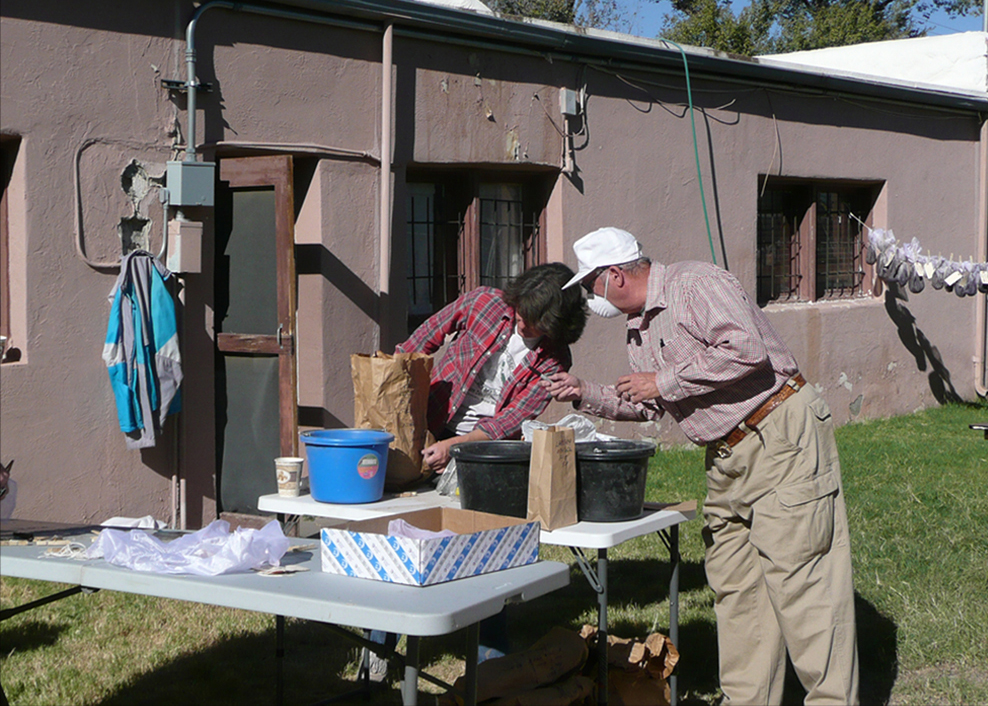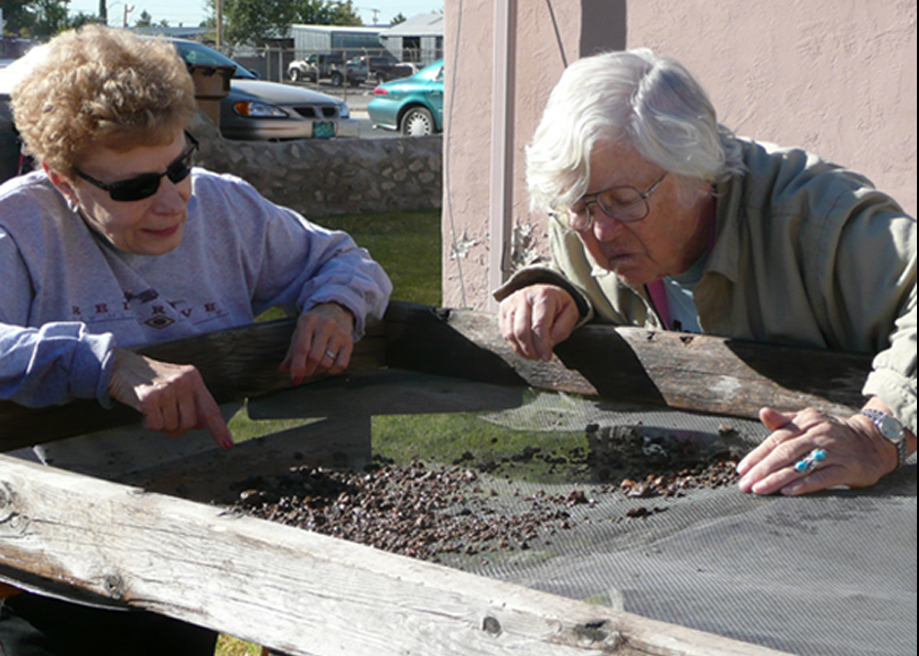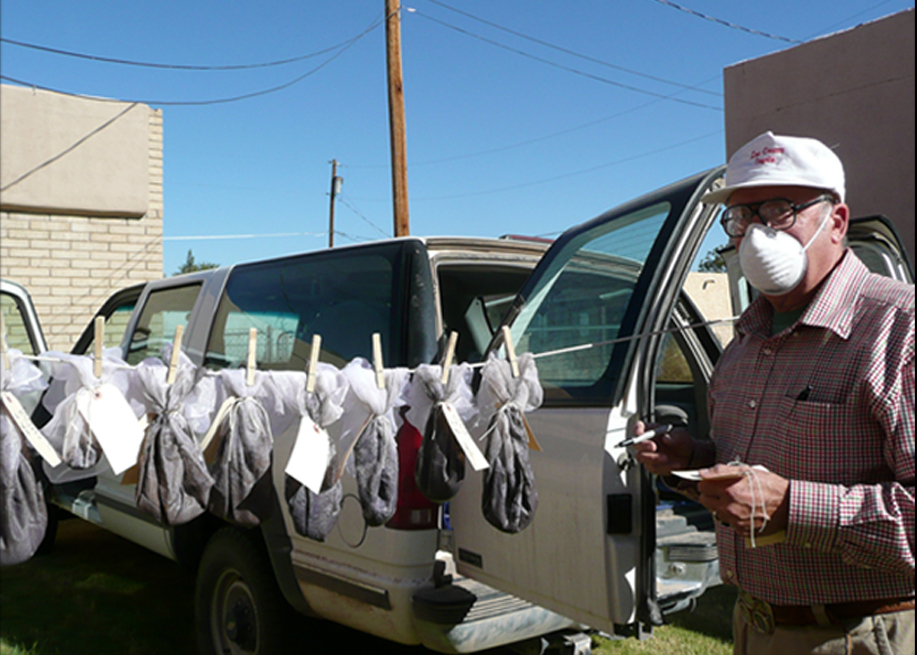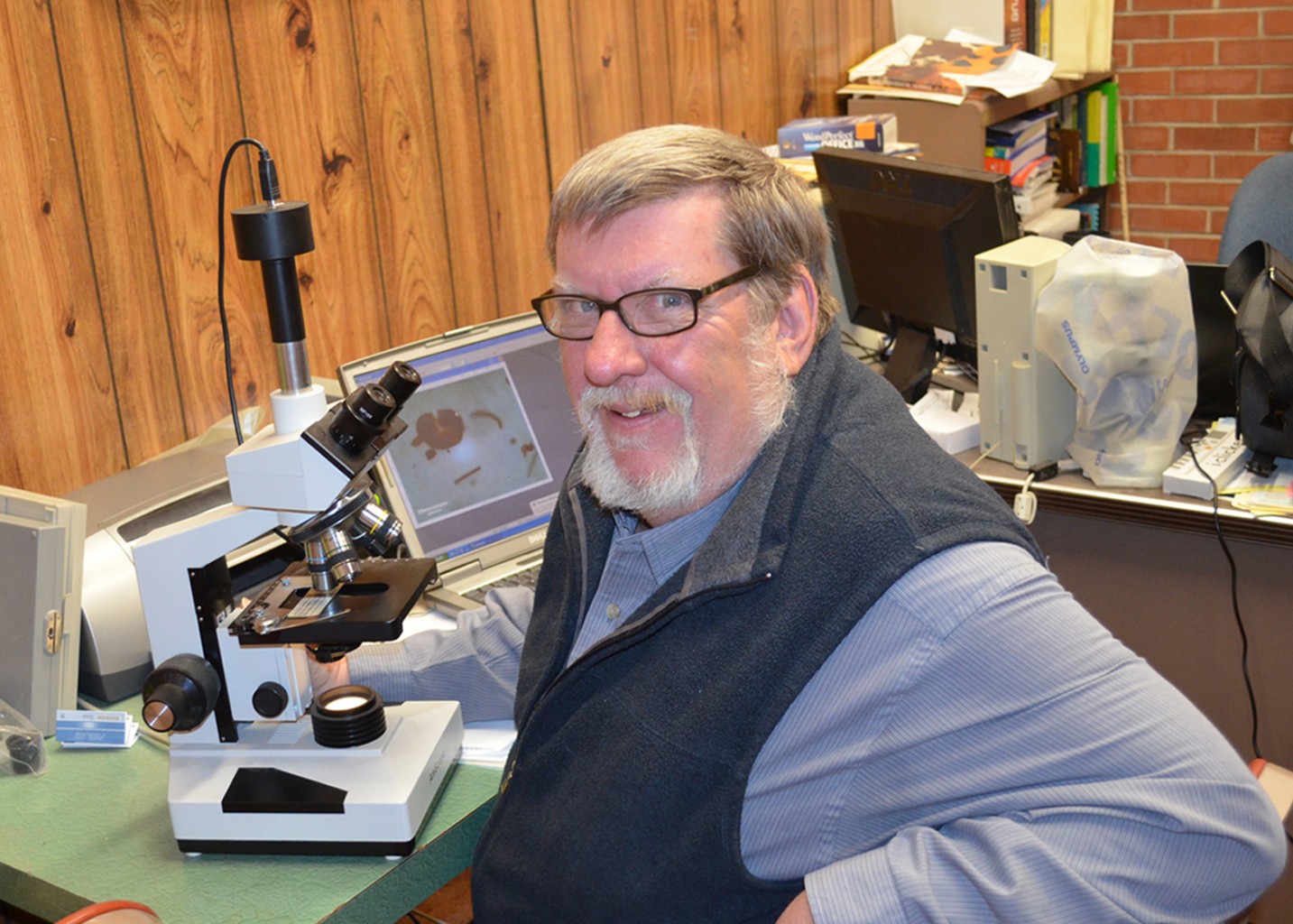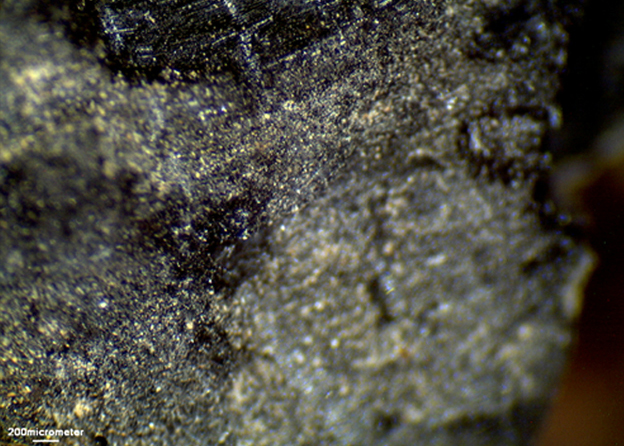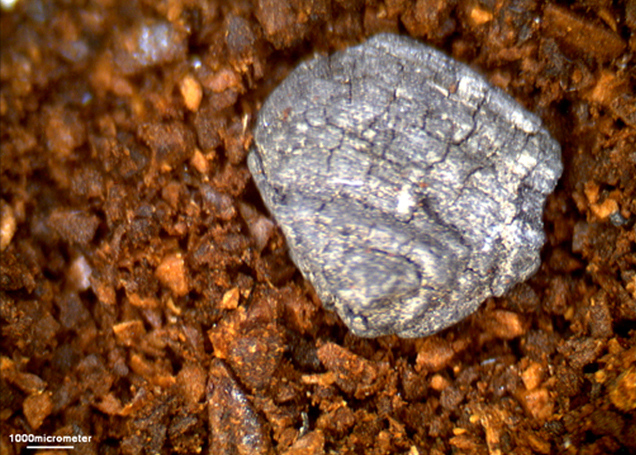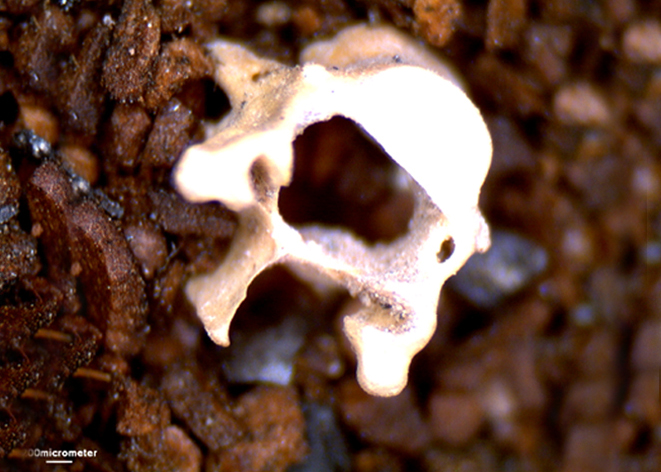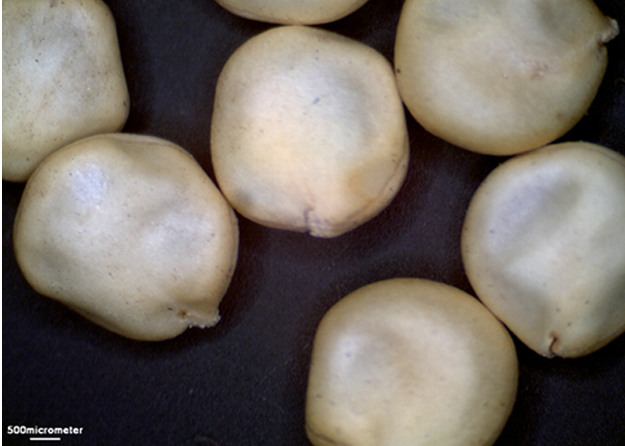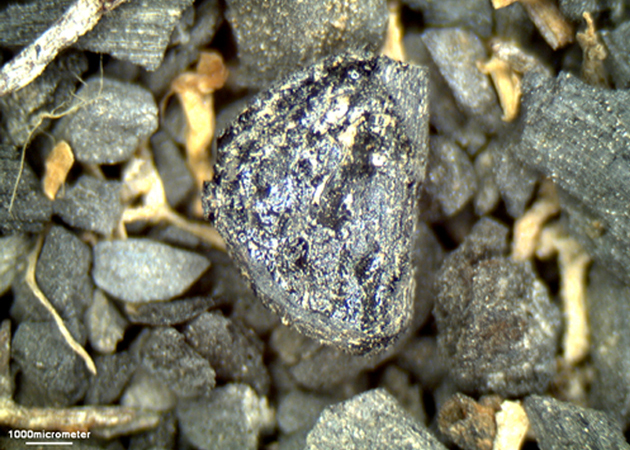Pollen Analysis
Different types of plants produce uniquely-shaped pollen grains which can survive in the soil for a very long time. Analysis of soils from suspected prehistoric field locations allows the identification of pollen produced by the plants that were grown there. Corn pollen is heavy and isn’t blown very far from its source. Two locations at the Cañada Alamosa, one on a high terrace and another near the river have produced corn pollen from buried deposits. Squash pollen was also found at one location.
Flotation
Archaeological flotation involves using water to process soil or ash and charcoal from firepits to recover charred plant remains. A bucket is filled with water and the soil, charcoal and ash is dumped into the water. Seeds, charcoal and other light material float to the surface and are collected with a screen. Artifacts, including flaked stone, ceramics and bone fragments are left in the bottom of the bucket and are recovered by screening, using water to wash the mud away. Charcoal and macrobotanical data recovered with flotation have provided an 800 year sequence of firewood and plant use in the Cañada Alamosa. One fascinating discovery is that riparian species such as phragmites were present in the canyon prehistorically but are absent today, indicating that the river bottom was much more stable in the past.

